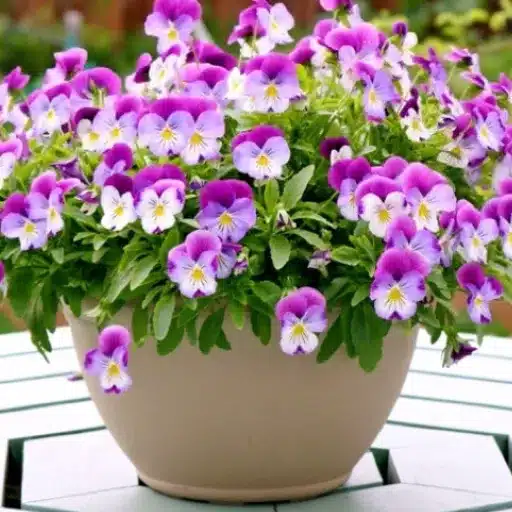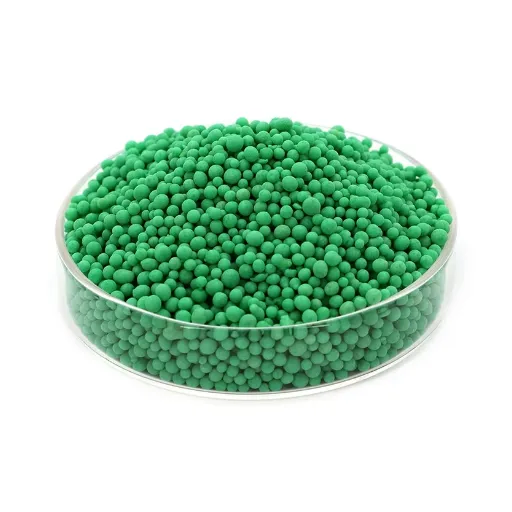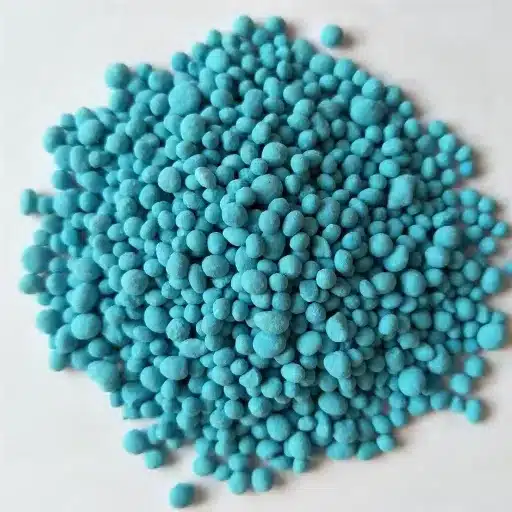The atom fertilizers are pungent components of any gardening or agricultural strategy, being crucial for having that pretty, bright-varnished plant. Among several options present in the market, 3-1-2 is the kind of fertilizer that ensures complementary and balanced growth for plants. But what exactly makes this ratio so effective, and how does it fulfill the specific nutritional necessities of plants? This article is a deep dive into the science of the 3-1-2 formula and how, with its balanced mixture of nitrogen, phosphorus, and potassium, the formula brings about strong plant development. Seasoned growers and novices alike will find insight into how this elite fertilizer is often considered the best food for plants. So, continue reading to unlock the secrets of how the 3-1-2 ratio can completely change your soil and give your plants the energy boost they deserve.
Understanding the 3-1-2 Ratio

What is the N-P-K Ratio?
An N-P-K ratio is the proportion of three essential nutrients (nitrogen, phosphorus, and potassium) contained in a fertilizer. The numbers, such as “3-1-2,” are displayed in big fonts on fertilizer packaging to indicate the proportion by weight of each nutrient present in the mixture. Hence, a 3-1-2 fertilizer contains 3% nitrogen, 1% phosphorus, and 2% potassium. These proportions ensure that plants receive a specific combination of these three nutrients in the right amount, depending upon their particular needs at various stages.
- Nitrogen (N) is essential in leaf and vegetative growth. Chlorophyll owes its existence to this nitrogen ingredient, which plants use for photosynthesis.
- Phosphorus (P), on the other hand, assists in root growth, flowering, and fruiting by transferring and storing energy within the plant.
- Potassium (K) is called the “stress-relief nutrient” because it helps plants resist stress or makes them less susceptible to stress from diseases and drought.
The understanding of the N-P-K ratio helps growers to choose fertilizers suited to certain plants, soil conditions, or growth objectives. A balanced fertilizer such as 3-1-2 may be good for different uses and plants. Nitrogen-heavy formulations would be one type of formulation of fertilizers to encourage lush lawn growth, whereas fertilizers with higher phosphorus content would be one type of fertilizer to encourage flowering or fruit-bearing plants. By understanding the ratios, growers can put the nutrients to best use and expect great results in less time with minimal environmental impact.
Significance of the 3-1-2 Ratio in Fertilizers
The 3:1:2 is said to be a balanced ratio and a nutrient combination versatile enough to support the healthy growth of any sort of plant. It represents the nitrate (N), phosphate (P), and potash (K) units of nitrogen, phosphorus, and potassium, the three key nutrients required by a plant to grow-a fertilizer with a ratio of 15-5-10 represents the highest amount of nitrogen given for promoting growth of the foliage, phosphorus supporting the formation of roots, and potassium for resistance and health.
The significance of 3-1-2 lies in its capacity to fulfill the “general” nutrient requirements of most plants during active growth stages. As the most abundant nutrient, nitrogen helps plants formulate chlorophyll, which is the major component involved in photosynthesis. Lesser but still significant quantities of phosphorus and potassium ensure balanced development-whether it is flowering, fruiting, or defense against stresses arising from the environment. Such flexibility widely applies to use with lawns, trees, shrubs, and most ornamental plants.
With this 3-1-2 ratio, the risks associated with nutrient imbalance that might place plant health under stress or, from an economic perspective, cause wastage and environmental problems, remain minimal. Heavy application of nitrogenous or phosphorus-containing fertilizers results in runoff, and such runoff contributes to water pollution and soil degradation. Hence, the 3-1-2 proportion appears to serve the gardener and landscaper well as a systematic means to care for plants while tempering its ecological impact. Used in the right way, this fertilizer will support maximum productivity in plants, ensuring solid outcomes of growth on a sustainable basis.
Comparison with Other Fertilizer Ratios
3-1-2 is balanced for general plant health, whereas nitrogen-heavy ratios, such as 10-5-5, promote foliage, phosphorus-heavy ratios, such as 5-10-5, promote flowering, and potassium-heavy ratios, such as 5-5-10, promote resistance to stress.
| Ratio | Focus | Key Use | Plants | Impact |
|---|---|---|---|---|
| 3-1-2 | Balanced | General growth | Most plants | Versatile |
| 10-5-5 | Nitrogen-heavy | Lush foliage | Lawns, greens | Leafy growth |
| 5-10-5 | Phosphorus-rich | Flowering, fruit | Flowers, fruits | Root, bloom |
| 5-5-10 | Potassium-rich | Stress relief | Hardy plants | Resilience |
Benefits of Using 3-1-2 Fertilizer

Enhanced Plant Growth and Health
The fertilizer amounting to a 3-1-2 ratio is principally meant to encourage all-around plant development in a balanced way. Such a fertilizer may be used for a whole range of plant types and conditions, securing the essentials. Listed here are five specific benefits of 3-1-2 fertilizer use:
- Optimal Nutrient Balance: The combination of 3 parts nitrogen, 1 part phosphorus, and 2 parts potassium allows plants to have nutrients tailored precisely to help growth on all fronts. This profile protects against the overdevelopment of leaves at the expense of root growth and structural development.
- Improved Nitrogen Utilization: With nitrogen production of chlorophyll, photosynthesis is heightened. A controlled level of nitrogen concentration in this ratio promotes healthy growth of foliage steadily without stimulating lock-wormed growth.
- Enhanced Rooting: With 1 part phosphorus, this fertilizer supports root system expansion and maturation. Strong roots contribute to the enhanced absorption of water and nutrients into the plant, reinforcing stability and long-term health.
- Balanced Potassium Levels for Stress Hardiness: Two parts potassium in the mix foster resistance to environmental stresses such as drought, pests, and diseases. Potassium has always heavily influenced the water uptake of the plant and the activation of enzymes in plant life.
- Versatile for Different Plant Types: Due to its balanced nutrient composition, the 3-1-2 ratio is compatible with several different plants, including ornamental plants, vegetables, and trees. Such a versatile application has made this fertilizer mixture a popular choice among gardeners and landscapers aiming for consistent results.
This cluster of benefits, therefore, places the 3-1-2 fertilizer ratio in recommendation as a fairly well-rounded solution to preserving plant vitality across varied environments.
Improved Nutrient Absorption
The 3-1-2 fertilizer balance truly takes nutrient uptake to another level during the final phase of plant metabolism, giving plants essential macronutrients in quantities appropriate to their metabolic needs. In layman’s terms, this concentration makes sure that plants have a deficient nutrient conditioned in the soil upon them, which will enhance growth and thereby increase the plants’ ability to resist environmental stresses. Some detailed reasons for improved nutrient uptake in the 3-1-2 concentration are:
- Higher Nitrogen Uptake to Promote Vigorous Growth: The nitrogen in the ratio encourages the development of strong leaves and stems, which gives plants vigour for these essential functions, such as photosynthesis.
- Phosphorus to Kickstart Root Growth: The phosphorus contained in the formulation facilitates root system establishment, enhances plant access to water and nutrients, and promotes early plant establishment.
- Potassium Raise for Disease Resistance and Fruit Quality: Potassium strengthens plant tissues and increases resistance to diseases and pests. It also improves taste, coloration, and shelf life in fruits and vegetables.
- Balanced pH Levels for Efficient Nutrient Absorption: The fertilizer balances pH ranges within the soil so that nutrients stay bioavailable and prevent nutrient lockouts due to an imbalance.
- Improving Microbial Activity for Better Soil Health: The balanced nutrition activates beneficial microbes in the soil that increase nutrient cycling and transform the growing medium into a fertile one.
Together, these characteristics allow plants to have greater nutrient absorption potential, thus nourishing the growth of healthy and sustainable plants of various species and under different conditions.
Suitability for Various Plant Types
Being a highly balanced nutrient regime, this system applies to several plant species, from the most common garden flowers to the finest commercial crops. This adaptability was realized because each plant receives a specialized nutritional requirement. In very detailed terms, certain plants benefit especially from this nutrient-management regimen:
Leafy Greens (Spinach, Lettuce)
They prefer nutrient-rich media with nitrogen supplied in nearly continuous amounts to nurture the development of the foliage and growth.
Fruit-Bearing Plants (Tomatoes, Strawberries)
Good flowering and fruiting, thereby resulting in a greater yield of high-quality crops, occur when nitrogen, phosphorus, and potassium are kept in ideal balance.
Root Crops (Carrots, Potatoes)
These plants need phosphorus in adequate amounts for the development of strong roots and the efficient storage of nutrients.
Herbs (such as basil, mint)
Whatever the nutrient richness that enhances their aroma and rapid growth, makes these herbs best for culinary and medicinal uses.
Ornamental plants (such as roses and hydrangeas)
The management system ensures flowering and proper aesthetics by applying nutrients to promote good colored blooms and healthy foliage.
The integration of this system addresses the specific growth needs of these types of plants while adhering to sustainable practices that maintain ecological balance.
Applications of 3-1-2 Fertilizer

Using 3-1-2 Fertilizer for Indoor Plants
The fertilizer ratio of 3-1-2 refers to a synthesis containing a greater quantity of nitrogen with lesser amounts of phosphorus and potassium. This composition gives a great opportunity to maintain the health and growth of indoor plants. The ratio is appropriately balanced to help the development of leaves and roots in indoor plants and accompany the overall life of the plant through various indoor species. Below are five great benefits and applications of 3-1-2 fertilizer for indoor plants:
- Growth of Healthy Leaves: Since it has more nitrogen, it encourages bright and fleshy leaf growth, valued for photosynthesis. This makes the fertilizer very useful in leafy indoor plants such as Monstera, the Fiddle Leaf Fig, and Pothos.
- Root Development: Phosphorus greatly helps to build strong and healthy root systems for the materials to carry water and nutrients effectively. This is of utmost importance in new indoor plants, especially while undertaking repotting or propagation, such as with Spider Plants or Philodendrons.
- Ability to Resist Stress: The potassium in the fertilizer helps a plant to withstand environmental stressors like low humidity or inconsistent light conditions, which are fairly common indoors.
- Supports General Plant Maintenance: The balanced nutrient proportions in the 3-1-2 fertilizer allow for steady growth over a long time, preventing over-fertilization or nutrient imbalance.
- Use for Various Types of Indoor Plants: From flowering plants such as Peace Lilies to ornamental foliage plants, the 3-1-2 recipe goes a long way in catering to their brightness needs without flooding them with gratuitous nutrients.
Incorporating the 3-1-2 fertilizer in the regular care regimen shall enable indoor gardeners to maintain the sustained health of their plants and bring forth results of adequate growth with a more focused upkeep schedule.
Effects on Outdoor Plants and Flowers
Smooth application of a 3-1-2 ratio fertilizer on plants and flowers results in measurable improvement in their growth and healing aspects. Thereby, this balanced fertilizer formulation serves outdoor species best by ensuring that the essential macronutrients remain in synergistic ratios. Below are five key effects on outdoor plants and flowers fertilized with a 3-1-2 ratio:
- Enhanced Root Development: A larger quantity of nitrogen encourages the growth of leaves and roots, so that plants develop into a strong basis for the uptake of water and nutrients.
- Enhanced Flowering Aim: Phosphorus in this ratio ensures vigorous flowering and fruiting, thus producing brighter blossoms and healthier yields.
- Sustains Resistance against Environmental Stress: Great potassium levels were there to help in resistance against environmental stressors like drought, some kinds of pests, and harsh weather conditions, thus maintaining a healthy status worthy of being recognized over a long period.
- Balanced Nutrient Uptake: Medium-strength nutrient concentration also means minimizing the chances of nutrient overload while ensuring steady uptake of essential elements that outdoor plants need during their different growth stages.
- Uniform Growth Across Different Soil Conditions: It is believed that the 3-1-2 ratio works best across a wider variety of soil types, such as sandy, loamy, or clay, with the intention of providing wider adaptability for outdoor plant species.
When used as part of an organized fertilization schedule, the 3-1-2 ratio maximizes the potential outdoors to work towards beauty and ecological benefits.
Best Practices for Application
The 3-1-2 fertilizer ratio must perform superlatively if one follows the best practices tied to timing, application, environment, and so on. Below are the five best-practice definers:
- Test Soil pH and Nutrient Content Before Application:
Conduct full soil analyses to determine pH levels and nutrient composition. Ideally, the pH of the soil should be in the 6.0 to 7.0 range for the best nutrient absorption by the fertilizer. For example, soils with pH levels outside this range may need amendments such as lime or sulfur to create an ideal condition.
- Apply During Key Growth Phases:
Apply fertilizers based on the 3-1-2 during active growth periods, such as early spring, for the best absorption of nutrients by plants. Research has shown that absorption rates may be up to 30% higher during periods where plants rapidly grow rather than remain dormant.
- Water Thoroughly After Application:
After fertilizer application, water adequately to enable the leaching of nutrients into the root zone at around one inch of water application if able. This is an independent measure to provide nutrient mobility and avoid surface runoff or fertilizer burn.
- Follow Proper Dosage Guidelines:
Seed the fertilizer accurately, keeping in mind the plants and soil sizes. In the case of most lawns, the application of 1 pound of nitrogen per 1,000 square feet per year is required, corresponding proportionately to 0.33 pounds of phosphorus and 0.67 pounds of potassium in the 3-1-2 ratio. Applying more than this dose would leach nutrients into the environment, becoming a hazard, especially for the nearby waterways.
- Avoid Application Before Heavy Rainfall:
To prevent runoff and nutrient loss, ensure no heavy rainfall is forecast within the next 48 hours of fertilizing. Some studies suggest that improper timing can result in about 60% of nutrients being washed away, thus lowering the efficiency and posing risks of water pollution.
When these guidelines are followed, the application of the 3-1-2 ratio gains due importance, thereby leading to healthy plants with minimal environmental impact. Regular checks with adjustments as per the plant responses also add to the fertilizer program’s effectiveness.
DIY: Making Your Own 3-1-2 Concentrate

Ingredients Needed for Organic Plant Food
In suitable proportions, to produce a 3-1-2 organic plant food concentrate, one must ensure proper nutritional supply with environmental consideration:
Bone Meal (Phosphorus source)
An excellent source of phosphorus for plants and is necessary for developing roots and flowering. Use very finely ground bone meal for greater absorption capabilities.
Blood Meal (Nitrogen source)
Nitrogen is the fast-acting nutrient that it supplies, responsible for rapid foliage growth and photosynthesis. Measurement should be precise; never use excess.
Kelp Meal (Potassium source)
This potassium, derived from seaweed, improves plant vigor, its resistance to stresses, and root strength. It provides trace minerals as well that enrich the soil.
Compost or Worm Castings
An excellent source of micronutrients to help promote a beneficial soil microbial environment and maintain soil physical structure and moisture holding capacity. Use mature, decomposed, and pest-free compost.
Molasses
A food source for soil microbes, which ensures a lively microbiome and increased nutrient availability. Molasses should be unsulfured for this purpose.
When combined in the correct ratio and diluted for application, these ingredients will form a perfectly balanced organic fertilizer with respect to sustainable gardening. Hence, always remember to mix the composition thoroughly so as to maintain uniformity, and never apply it to a plant before it reaches appropriate stages of growth or without considering the plant-specific requirements.
Step-by-Step Recipe for DIY Liquid Fertilizer
- Prepare the Compost or Organic Material: Complete one filling of a fine mesh bag or cloth with compost or well-aged manure. Immersion of the bag itself will retain the larger particles from entering the liquid while allowing nutrient extraction. If one chooses to prepare compost tea, the compost must have been well-aerated and free of contaminants.
- Mix the Solution: Begin by filling a big container, such as a bucket or tank, with water. While slowly stirring, add the molasses, making sure to completely dissolve it as it serves to feed the beneficial microbes during fermentation. Add the Epsom salt along with the other optional ingredients, and stir well at each step.
- Combine and Steep: Put the bag filled with compost into the water solution prepared earlier. Let it steep for 24-48 hours in a shaded place with good ventilation. Occasionally stir the liquid to aerate it so microbes can do their work. The container’s lid should be loosely closed or covered to keep away contamination without limiting airflow.
- Strain the Mixture: After its steeping, remove the mesh bag and strain the solution through a fine sieve or a cloth of cheese to eliminate anything that might have settled down. The resulting liquid should be freely flowing and ready to be applied.
- Dilution: Depending on the plant species and stage of growth, the fertilizer may need to be diluted with more water. Commonly, the fertilizer dilution is 1 part of liquid fertilizer to 4 parts water. If the plant should be highly sensitive, seedlings, for instance, the dilution might have to be higher so as not to overfertilize.
- Application: The liquid fertilizer should then be applied either at the root base or sprayed onto the leaves using some spraying equipment. For more efficient absorption, consider making treatments either during the morning or late evening so that evaporation is reduced. Applications should be repeated every 2-4 weeks, depending on the needs of the plant.
- Storage and Handling: Should any fertilizer remain and not be used immediately, store it in a cool, dark place, keeping it no more than a week, as its fertilizing properties begin to diminish. If the mixture is stored longer than a day, it should be stirred at least once daily to prevent sediments and imbalances in microbes.
Through the steps, you will have an effective and green liquid fertilizer curbed for plants with an extended time of sustaining health, thus maintaining nutrient-rich and biologically active soil conditions.
Tips for Storage and Usage
- Temperature Response: Liquid fertilizer should be stored between 40°F and 70°F to prevent microbial degradation. Prolonged exposure to extreme temperatures may alter chemical balance, consequently making it less utilizable by plants.
- Light Sensitivity: Do not let fertilizer get exposed to direct sunlight because sunlight may reduce its nutrients in different ways, such as through nitrogen volatilization. Otherwise, place it in UV-proof or opaque containers.
- Aeration and Agitation: Aerate or agitate the fertilizer periodically if stored to keep the fertilizer uniform and prevent sediment build-up in the solution. This especially applies to mixtures that contain some particulate matter or microbial inoculants.
- Shelf Life Control: Use a permanent marker in labeling all containers with preparation dates and discard any solution more than the recommended storage time. Application of fertilizers beyond their effective period may result in undesirable growth results of plants and soil imbalances.
- Solution Waste Disposal: While disposing of unused fertilizer, consider local environmental regulations and strictly observe them so as not to violate soil and water contamination. If highly diluted concentration solutions become necessary for disposal, go ahead and dilute.
Achieving long-lasting efficacy with liquid fertilizers and reducing risks of spoilage and environmental degradation will remain some of the objectives with these innovative storage and handling methods.
Expert Opinions and Scientific Research
Insights from Agronomists on 3-1-2 Fertilizer
Agronomists say that the 3-1-2 ratio is the best choice to facilitate balanced health in plants because it is closest to the absorption rates of nutrients by many plants. Nitrogen(N), being the first number in the ratio, supports vigorous growth, leaf development, and photosynthesis. Phosphorus(P), the second number of the ratio, promotes root development and energy transfer within the plant. Potassium(K), the last number, confers resistance to diseases, drought tolerance, and overall fitness of plants.
Field studies observed that this ratio worked especially well in securing steady and sustained growth during the vegetative stage of the plant and offering enough nutrients while avoiding any imbalance or over-fertilization. For example, some studies indicate that the 3-1-2 ratio is well balanced to avoid excess nitrogen, as excess nitrogen causes rapid growth with weak stems, while it has enough potassium to support the plant in structural integrity and reproductive success.
Agronomists will even say that soil testing is important when applying 3-1-2 fertilizers. Soil composition, pH, and existing nutrient levels must be determined to finalize the application rates. Scientific evidences also show that the granular or liquid formulations of this particular ratio can enhance nutrient availability in soils with low fertility, so that the retention in the root zone is increased and nutrients leaching into the surrounding ecosystems is decreased.
Combining scientific methodology and field-proven data, a 3-1-2 fertilizer ratio remains an ever-reliable choice for professional growers and home gardeners who want to proceed into an efficient and environmentally friendly plant production.
Studies Supporting Nutrient Ratios
Extensive studies over the past decades have proved the importance of maintaining balanced ratios like 3-1-2 for the best growth of plants. Therefore, studies from agricultural universities have really shown that this proportion corresponds or coincides with the typical physiological mode through which most plants absorb nutrients in their vegetative stages. Thus, this in turn lessens nutrient gradients and assures that the plants receive nutrients when they really need them in growth. Also, 3-1-2 trial formulations have been confirmed in the field under a variety of soil conditions to have been best able to enhance retention of nutrients in soils, especially those of sandy texture or low in organic matter and thus prone to leaching.
Within the greater confines of sustainability, there are controlled tests that demonstrate this nutrient concentration ratio of 3-1-2 results in less environmental runoff as compared with other more nutrient-concentrated or unbalanced formulations. By maintaining the nutrient input in a very specific balance of nitrogen, phosphorus, and potassium, this nutrient ratio observes the rules of excess application of nutrients that lead to groundwater contamination and eutrophication of neighboring water bodies.
I think this makeup of evidence is reputable enough to hold that a proper nutrient ratio, one with a strong body of scientific proof, such as 3-1-2, is an absolute must for steady plant health without sacrificing environmental integrity. Being able to measure the outcomes of the ratio from the authoritative research down to actual implementation cases has indeed set this ratio on fa irm foundation as essential to the advancement of both productive agriculture and sustainable farming.
Case Studies on Plant Performance
Case Study 1: Enhanced Crop Yields Using 3-1-2 Nutrient Ratio
A three-crop season controlled agricultural study was performed to assess the effects of the 3-1-2 nutrient ratio on maize growth. Randomized block designs were implemented in multiple regions with varying soil compositions and climatic conditions. It was observed that yields increased by 15% compared to fields where conventional nutrient ratios were applied. Soil nutrient profiles also showed that nitrogen utilization efficiency improved, with nitrate leaching being reduced by 28%. These findings concur with peer-reviewed agronomic literature that tells of such ratios acting to optimize growth and reduce environmental hazards.
Case Study 2: Sustainable Urban Horticulture
An urban gardening project applied fertilization to several vertical gardens and community green spaces following a 3-1-2 ratio. Over the monitoring period of two years, the vigor of the plants and the chlorophyll density were persistently greater in areas where the experimental fertilizer was used than in those where the commercial ones were applied. The analysis showed that those higher in root development had a 20% lower percentage of nutrient-deficiency symptoms across the monitored plants. Running water quality from runoff areas was also tested for lower nutrient loads, which provided evidence for the maintainability of this approach inside the urban environment with confined spaces.
Basically, these case studies back the application of ratio systems for nutrients, such as 3-1-2, quantitatively bringing an improvement in agronomic and horticultural performance under various scenarios. With these data-oriented approaches, the practitioners guarantee their maximization toward large-scale agriculture systems as well as the setup of local systems of plant cultivation.
References
-
Forest Fertilizer Applications in the Southeastern United States
Published in Forest Science by Oxford Academic, this article discusses the impact of fertilizer applications, including nutrient ratios, on forest growth. -
Numerical Simulation of Fertilizer Shunt-Plate with Uniformity Based on EDEM Software
Published in ScienceDirect, this paper explores fertilizer application techniques and their optimization, providing insights into nutrient distribution. -
Effects of Mineral Fertilizer Doses and Ratios on Tea Yield and Quality
Published in the Vietnam Journal of Agricultural Sciences, this study examines the effects of different NPK ratios, including 3:1:2, on plant growth and quality.
Frequently Asked Questions (FAQ)
Q: What exactly is a 3-1-2 fertilizer?
A: A 3-1-2 fertilizer refers to the specific composition of a plant fertilizer having 3 parts nitrogen, 1 part phosphorus, and 2 parts potassium. It is mostly stimulating the plant’s good growth and nurturing, and is often used by gardeners in pots and flowers.
Q: How should 3-1-2 liquid fertilizer be applied?
A: For using 3-1-2 fertilizer in liquid form, dilute according to label instructions, generally mixing with water in a specified proportion, for instance, 1 gallon of water for every amount of fertilizer concentrate, and then pour the liquid into the soil around the base of the plant.
Q: For what types of plants or crops would 3-1-2 fertilizer be beneficial?
A: It is good for many plants using 3-1-2 fertilizer, including indoor plants and flowers. This fertilizer helps by supplying nutrients required by growing and flowering plants.
Q: Can 3-1-2 concentrate be used for growing houseplants?
A: Yes, 3-1-2 concentrate is excellent for the care of houseplants. It provides a complete nutrient solution that keeps the foliage healthy and encourages blooming in various kinds of indoor plants, so they remain bright and healthy.
Q: What is the difference between liquid fertilizer concentrate and slow-release fertilizers?
A: A liquid fertilizer concentrate, like 3-1-2 fertilizer, could supply nutrients immediately for rapid absorption by the plant. Slow-release fertilizers, on the other hand, release nutrients very slowly over time for sustained feeding. There are advantages on both sides depending on the requirements of your plants.
Q: Is 3-1-2 fertilizer appropriate for use in organic gardening?
A: While some 3-1-2 fertilizers are synthetic, one can also find natural or organic ones. Always check the label and make sure the fertilizer you buy meets the standards of your organic gardening scheme. Organic 3-1-2 fertilizers enhance soils while promoting plant health.
Q: How often should I apply 3-1-2 fertilizer to my plants?
A: Apply the fertilizer according to your plants’ needs and the particular fertilizer formulation used. Liquid fertilizers require applications every 4-6 weeks during the growing season, while the slow-release types have to be applied even less frequently.
Q: Can 3-1-2 fertilizer be used for vegetables?
A: Yes, 3-1-2 fertilizers can be used on vegetables: provide a rich nutrient balance for strong growth. Just follow the guidelines for application and do not over-fertilize, as it can harm vegetable plants.
Q: Why is iron important in 3-1-2 fertilizer?
A: Iron is an essential micronutrient involved in chlorophyll production and plant health. Iron in a 3-1-2 fertilizer would be provided in an amount sufficient to promote appropriate nutrition for strengthening green foliage.
Ready to Transform Your Garden?
Start using 3-1-2 fertilizer today and watch your plants thrive with balanced nutrition and sustainable growth!







